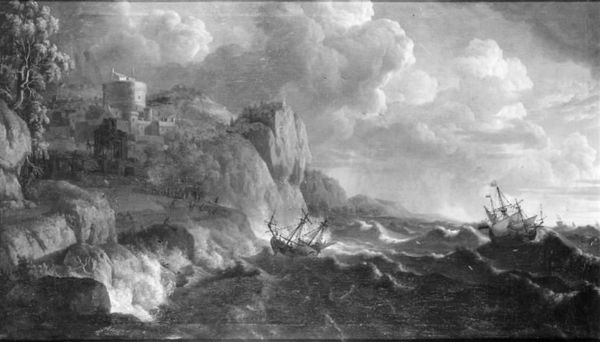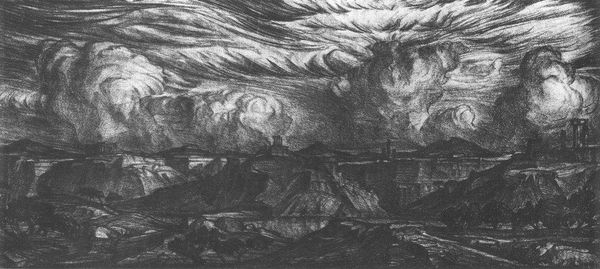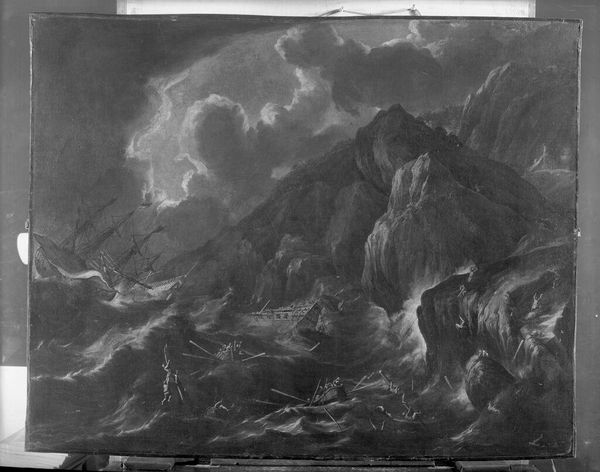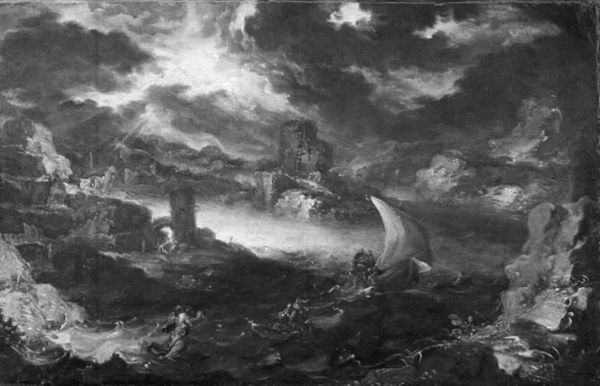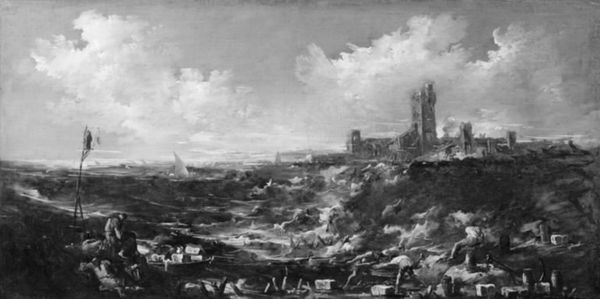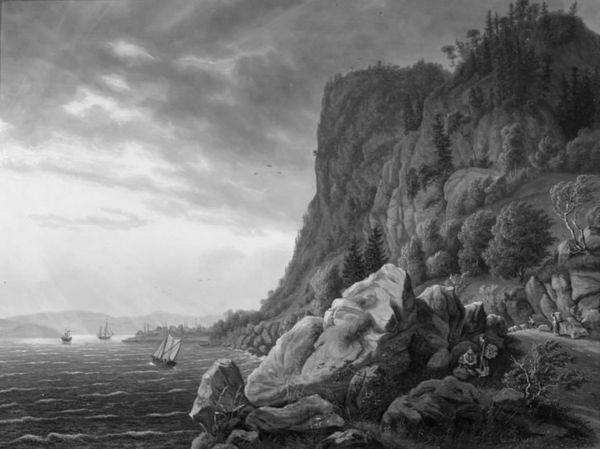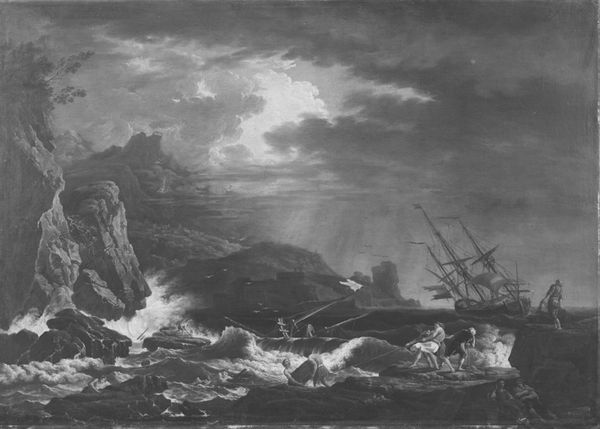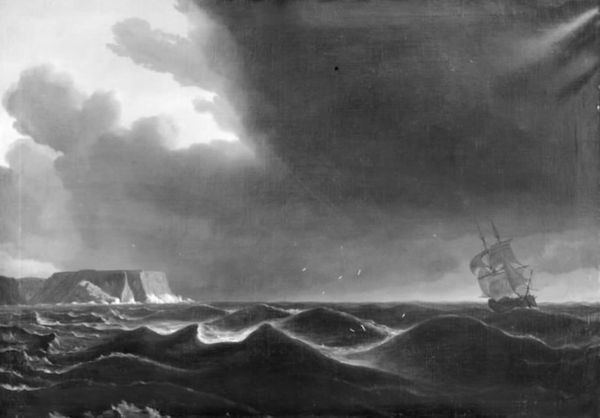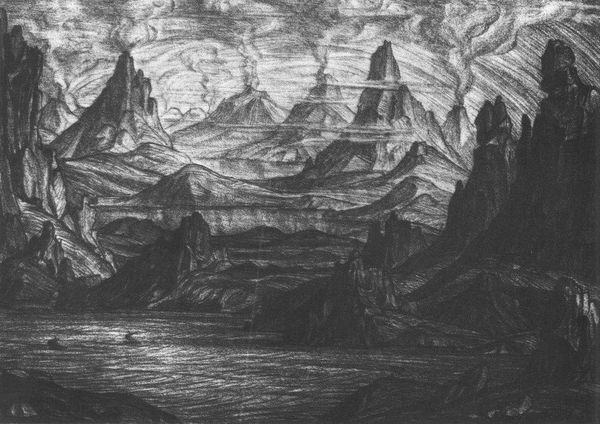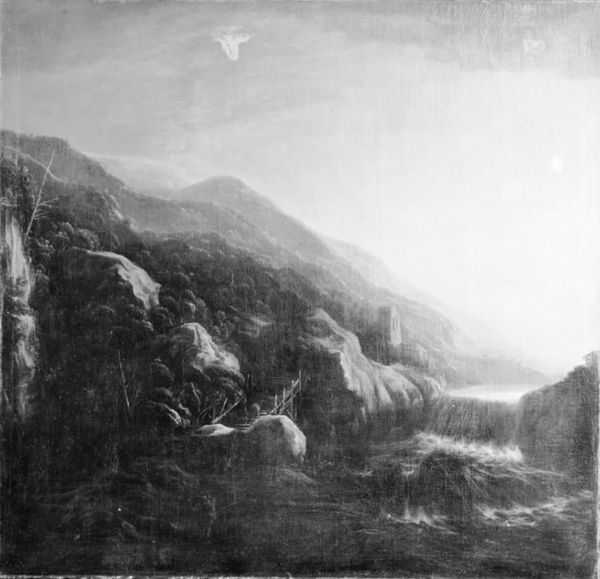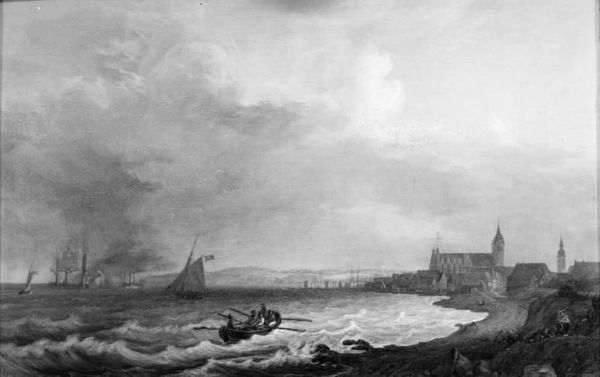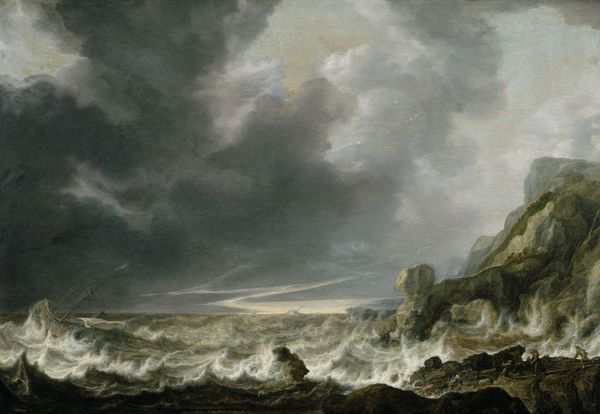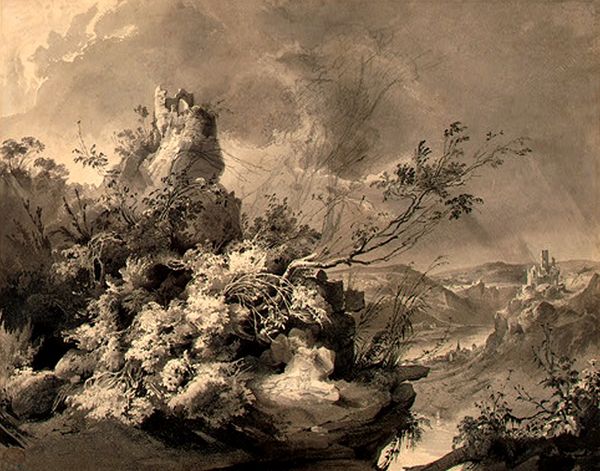
A Rocky Coast with a Atormy Sea and Ships Being Wrecked 1704
0:00
0:00
painting, oil-paint
#
narrative-art
#
baroque
#
painting
#
oil-paint
#
landscape
#
charcoal drawing
#
cityscape
#
history-painting
#
charcoal
Dimensions: 44 cm (height) x 75 cm (width) (Netto)
Editor: We're looking at Friedrich Wilhelm Boehme's 1704 oil painting, "A Rocky Coast with a Stormy Sea and Ships Being Wrecked", here at the Statens Museum for Kunst. It is so dynamic, a churning seascape. What do you see when you look at how it's structured? Curator: Formally, observe the diagonal thrusts dominating the composition. From the lower left to the upper right, the roiling waves create a strong directional force. The dark rocks in the foreground establish a solid base, counterpointed by the billowing clouds that echo the waves' dynamism. What function do the clouds perform, visually? Editor: I guess they mimic the waves, but vertically. So, we get these layers that pull us between danger and a safe haven, maybe? But do you think the lack of vivid color takes away some of the immediacy of the disaster? Curator: Quite the contrary. By restricting the palette to near monochrome, Boehme concentrates our attention on the textures and forms. The interplay of light and shadow on the water's surface generates an extraordinary illusion of depth and movement. What would happen, structurally, if there was bright color in the wrecking ships? Editor: Oh, of course! The ships stand out because their grey lines almost vanish into the water. Colour would pull our eye and maybe diminish from the wider impact of the landscape. Curator: Precisely. The artist manipulates form and value to achieve a desired aesthetic effect. The painting uses the structure and materials in order to establish narrative in an affecting and dramatic way. Editor: I never considered that absence can contribute as much to the whole as the objects within. Thank you! Curator: A fruitful insight, I'd say!
Comments
No comments
Be the first to comment and join the conversation on the ultimate creative platform.
